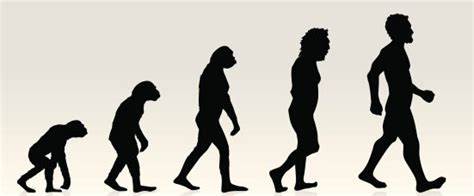how neanderthals and other early humans evolved to eat starch

The evolution of the ability to eat starch in early hominins, particularly Neanderthals and their counterparts Homo sapiens, is a fascinating story of genetic adaptation, environmental stress, and dietary change. The ability to ingest and digest starchy foods such as tubers, grains, and roots was critical to the survival and evolutionary success of these hominins. This change in diet not only provided a reliable source of energy, especially in cold, highly seasonal climates, but also had profound effects on brain development, cultural practices, and social structures. In this essay, we will review the evolutionary, genetic, and archaeological evidence that shows how early hominins evolved to eat starch, focusing on Neanderthals and Homo sapiens and examining the role that starch played in their evolution. Neanderthals and other early humans evolved to eat starch
###1. Background and diet of early hominins #### Prehistoric diet and early hominins The diet of early hominins, before the emergence of Homo sapiens and Neanderthals, consisted primarily of fruits, leaves, and other plants, with small amounts of animal protein obtained through fishing and hunting. These early hominins, such as B. australopithecus afarensis, which lived about 3.5 million years ago, were adapted to ingesting primarily fibrous plant material. Evidence from isotopic analysis of fossilized teeth and dental microwear suggests that early hominins consumed a variety of plant foods, but their diet may have changed based on availability in the environment. As hominins evolved and moved into different environments, their diet began to include a wider range of foods, including seeds, nuts, and meat. The genus Homo, including species such as Homo erectus, began to show physiological adaptations to a more diverse diet. These adaptations include changes in dentition, jaw structure, and digestive enzymes, all of which suggest that early Homo species were omnivores, able to eat both plant and animal foods. #### Neanderthals and Homo sapiens: Key differences and similarities Sharing a common ancestor about 700,000 years ago, Neanderthals (Homo neanderthalensis) and Homo sapiens evolved in parallel in different parts of the world, with Neanderthals living mainly in Europe and parts of Asia, and early modern humans emerging in Africa. Both species had similar dietary adaptations, but their eating habits were shaped by the environments in which they lived. Neanderthals, who lived in colder, more temperate regions, often relied more on meat due to the scarcity of plant foods during the long winters. However, recent archaeological discoveries suggest that Neanderthals also consumed significant amounts of plant foods, including starchy tubers and grains, when such foods were available. Homo sapiens, especially those who lived in temperate and tropical regions, were able to consume a greater variety of plant foods throughout the year. The ability to ingest and digest a wide range of foods, including starch, was a key factor in their adaptability and success as a species. Starch in particular played a key role in the diet of early Homo sapiens, providing a reliable, dense source of energy. Neanderthals and other early humans evolved to eat starch, Neanderthals and other early humans evolved to eat starch
### 2. Genetic adaptations for starch digestion #### Role of amylase One of the most important genetic adaptations for starch consumption in humans is an increase in amylase, an enzyme produced in the saliva and pancreas that breaks down starch into monosaccharides. Amylase is encoded by the AMY1 gene, and humans have more copies of the AMY1 gene compared to other primates, which correlates with increased amylase production. Studies have shown that the copy number of the AMY1 gene varies among human populations, with higher copy numbers in populations that historically consumed more starchy foods. This suggests that the ability to efficiently digest starch was an important adaptation in populations where starchy foods such as tubers, grains, and root vegetables made up a large portion of the diet. Higher amylase production would have allowed early humans to extract more glucose from starch, providing an important source of energy, especially during times of food shortages and in cold climates where plant foods were less abundant. Neanderthals are also thought to have made genetic adaptations for starch consumption, although to a lesser extent than Homo sapiens. Genetic evidence suggests that Neanderthals have fewer copies of the AMY1 gene compared to modern humans, suggesting that Neanderthals may have been able to digest starch but not as efficiently. This difference in starch digestion may have influenced the nutritional strategies of Neanderthals and Homo sapiens, especially when they came into contact during periods of overlap in Europe and Asia. #### Evolutionary advantages of starch digestion The ability to digest starch would have provided early humans with several evolutionary advantages. Starch-rich foods, such as tubers and grains, are abundant in many environments and can be stored for long periods, making them a reliable source of nutrition in times of scarcity. The ability to consume and store starch-rich foods would have been particularly beneficial in cold climates where plant foods are less available during the winter. In addition to providing a steady source of energy, starch consumption may also play a role in brain development. The human brain is very energy hungry, consuming up to 20% of the body’s total energy while at rest. Glucose from starch is the brain’s primary fuel, and a starch-rich diet would have helped meet the energy needs of the growing brain. Some researchers suggest that the ability to consume and digest starch may be one of the factors that contributed to the development of larger brains in Homo sapiens compared to early humans and Neanderthals. Neanderthals and other early humans evolved to eat starch. Neanderthals and other early humans evolved to eat starch. Neanderthals and other early humans evolved to eat starch. Neanderthals and other early humans evolved to eat starch. Neanderthals and other early humans evolved to eat starch. Neanderthals and other early humans evolved to eat starch. Neanderthals and other early humans evolved to eat starch.Neanderthals and other early humans evolved to eat starch. Neanderthals and other early humans evolved to eat starch. Neanderthals and other early humans evolved to eat starch. Neanderthals and other early humans evolved to eat starch. Neanderthals and other early humans evolved to eat starch. Neanderthals and other early humans evolved to eat starch. Neanderthals and other early humans evolved to eat starch. Neanderthals and other early humans evolved to eat starch
###3. Archaeological evidence for starch consumption #### Evidence from dental plaque and fossilized teeth Some of the most compelling evidence for starch consumption in early humans comes from the analysis of dental plaque and fossilized teeth. Studies of Neanderthal teeth have found microfossils of starch grains in dental plaque, suggesting that Neanderthals ate a variety of plant foods, including starchy tubers and grains. This discovery calls into question previous assumptions that Neanderthals were primarily carnivores and suggests that their diet was more diverse than previously thought. Similarly, evidence from early Homo sapiens teeth indicates that starch consumption was common among people in different parts of the world. Fossilized teeth of early modern humans from Africa, Europe, and Asia contain starch particles from a variety of plants, including tubers, grasses, and grains. This suggests that starchy foods were an important part of the diet of early Homo sapiens, regardless of geographic location. #### Cooking and processing starchy foods The ability to cook and process starchy foods likely played an important role in the development of early human diets. Cooking breaks down plant cell walls, making starch more accessible and digestible. Archaeological evidence suggests that early humans, including Neanderthals and Homo sapiens, used fire to cook food as early as 400,000 years ago. The use of fire would have allowed early humans to cook starchy foods such as tubers and grains, increasing the availability of glucose and other nutrients. In addition to cooking, early humans may have also developed techniques to process starchy foods, such as grinding and fermentation. Archaeological sites in Africa and Europe have found stone tools with wear patterns consistent with the grinding of plant materials, suggesting that early humans processed grains and tubers to make them more digestible. This technological innovation would have further increased the availability of starch as a food source.
###4. The role of strength in human evolution and culture #### Strength and development of agriculture The development of humans’ ability to eat starch is closely linked to the development of agriculture. During the Neolithic Revolution about 10,000 years ago, human societies began to domesticate plants and animals, leading to the development of agriculture and the rise of complex civilizations. Many of the plants domesticated during this period, such as wheat, barley, rice, and corn, were rich in starch, and the ability to efficiently digest these foods was essential to the success of early agricultural societies. The development of agriculture allowed people to produce surplus food, leading to population growth and the establishment of permanent settlements. Starchy plants became staple foods in many parts of the world and formed the basis of diets in regions as diverse as the Middle East, East Asia, and the Americas. The ability to efficiently digest starch would have provided a significant evolutionary advantage to those societies where starchy foods were abundantly available. #### Social and cultural consequences of starch consumption Starchy food consumption also had important social and cultural consequences on early human societies. The ability to preserve and process starchy foods such as grains and tubers would have allowed early humans to build up food reserves, reducing the risk of starvation and allowing the development of more complex social structures. In many cultures, sharing food, especially starchy staples, has played an important role in social bonding and cooperation. Furthermore, the production and consumption of starchy foods may have influenced early human technology and tool development. The need to harvest, process, and preserve starchy foods likely led to the development of new tools and technologies, such as grinding stones, storage containers, and cooking methods. These innovations had a lasting impact on human culture and technology, shaping the course of human history.
### Conclusion The evolution of the human ability to eat starch is a story of adaptation and survival. Both Neanderthals and early Homo sapiens developed the ability to digest starch, but Homo sapiens may have had a better ability due to their higher AMY1 gene copy number. Starchy foods provide a reliable source of energy, especially in environments where other food sources are scarce. This dietary adaptation not only supported the development of larger brains in early Homo sapiens, but also played a key role in the rise of agriculture. And the development of human civilization. Archaeological finds such as dental plaque, fossilized teeth, and tools all indicate the importance of starch in the early human diet, highlighting its role in human evolution and culture. The ability to consume and process starchy foods was not only a biological adaptation, but also a cultural and technological adaptation. The development of methods to cook, grind, and preserve food allowed early humans to make the most of the starchy foods available in their environment, contributing to their success as a species. As humans evolved and spread across the globe, starch remained a fundamental component of the human diet and has shaped the course of human history and civilization.

Visit our website bangladeshtodays.org

